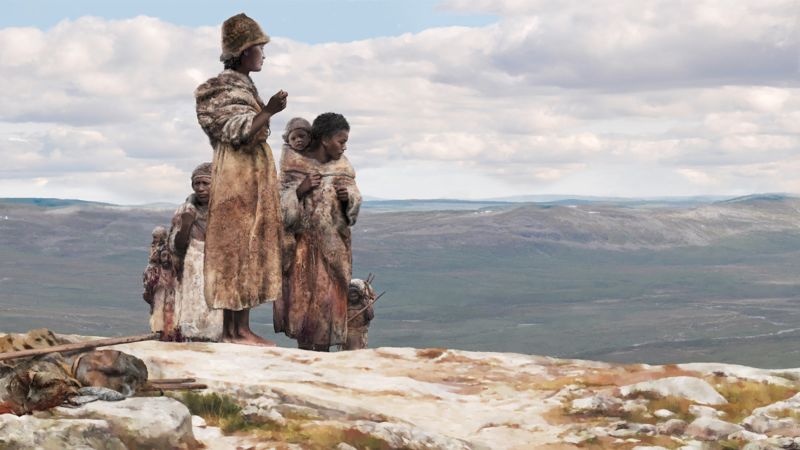Recent scientific advancements have shed light on the shared evolutionary history between Homo sapiens and Neanderthals. Researchers have successfully recovered the oldest known DNA from Homo sapiens, derriving insights from human remains that were discovered in Europe. This groundbreaking discovery contributes significantly to our understanding of the complex relationship our species has with Neanderthals, focusing on the interbreeding that occurred between these two groups of early humans.
The remains, consisting of 13 bone fragments, were excavated from an ancient cave located beneath a medieval castle in Ranis, Germany. Analysis revealed that the fragments belonged to six individuals, which included a mother-daughter pair as well as other distant relatives who resided in the area approximately 45,000 years ago. The findings were published in the journal *Nature*, emphasizing the depth of history involved in the evolutionary narrative. Notably, the genomes of these individuals show evidence of Neanderthal ancestry, suggesting that the early humans living in and around Ranis encountered Neanderthals and interbred with them around 80 generations ago, approximately 1,500 years prior to the individuals’ existence.
This exciting research follows the initial breakthroughs achieved in 2010 when scientists sequenced the first Neanderthal genome, revealing the interbreeding legacy that persists in human DNA today. Although it has long been known that Homo sapiens and Neanderthals intermingled, the specific timeline, frequency, and geographic locations of this important juncture have remained elusive. It was generally believed that this interspecies contact occurred in the Middle East, as early Homo sapiens spread out of Africa and came into contact with Neanderthals, which had inhabited Eurasia for the past 250,000 years.
In conjunction with the *Nature* study, another significant investigation published in *Science* analyzed the genomes of 59 ancient humans along with those of 275 living individuals. This broader research corroborated the findings of the Ranis study, pinpointing a specific timeline during which the majority of modern humans’ Neanderthal ancestry can be traced back to a singular extended period of gene flow between the two species. This period spanned from approximately 50,500 to 43,500 years ago, just prior to the time when Neanderthals became extinct. The peak interaction may have occurred around 47,000 years ago.
The studies highlight the genetic legacy that remains from Neanderthals, revealing how certain genetic variants inherited from these ancient ancestors still hold relevance in contemporary human populations. For instance, certain genetic traits linked to immune response, skin pigmentation, and metabolism — traits that were beneficial for survival in harsh climates — survived through the ages. This phenomenon of genetic trade, known as introgression, enables researchers to gain a clearer understanding of human migration patterns and the ensuing interbreeding with Neanderthals.
Interestingly, the research findings also indicated that specific regions of the human genome, termed “archaic deserts,” lack Neanderthal genetic contributions. These areas may have developed as a quick response to hybrids suffering from genetic complications such as birth defects or diseases, which would undermine their reproductive success. Notably, the X chromosome revealed even greater challenges for offspring of mixed lineage, as certain genetic diseases had a pronounced effect on male fertility.
Moving forward, while the research provides invaluable insights into our past, questions remain. For example, there is still ambiguity about why East Asian populations possess more Neanderthal ancestry compared to Europeans, or why certain Neanderthal genomes from the period show little evidence of Homo sapiens’ genetic material. Despite being the oldest known Homo sapiens remains, the DNA analyzed from Ranis – combined with previously recovered Neanderthal DNA dated at 400,000 years old – continues to unfold the layered history shared by these human ancestors.
In conclusion, the early Homo sapiens who resided in Europe were not just isolated groups but rather formed part of a larger interconnected web of human and Neanderthal interactions. These ancient people displayed genetic traits reflective of their African origins, characterized by dark skin, hair, and eyes. Yet, their population ultimately came to an end, leaving no trace in today’s genetic makeup. The broader implications of these discoveries underscore that the narrative of human evolution is not always one of unbroken success; rather, it is frequently marked by struggle and extinction.



